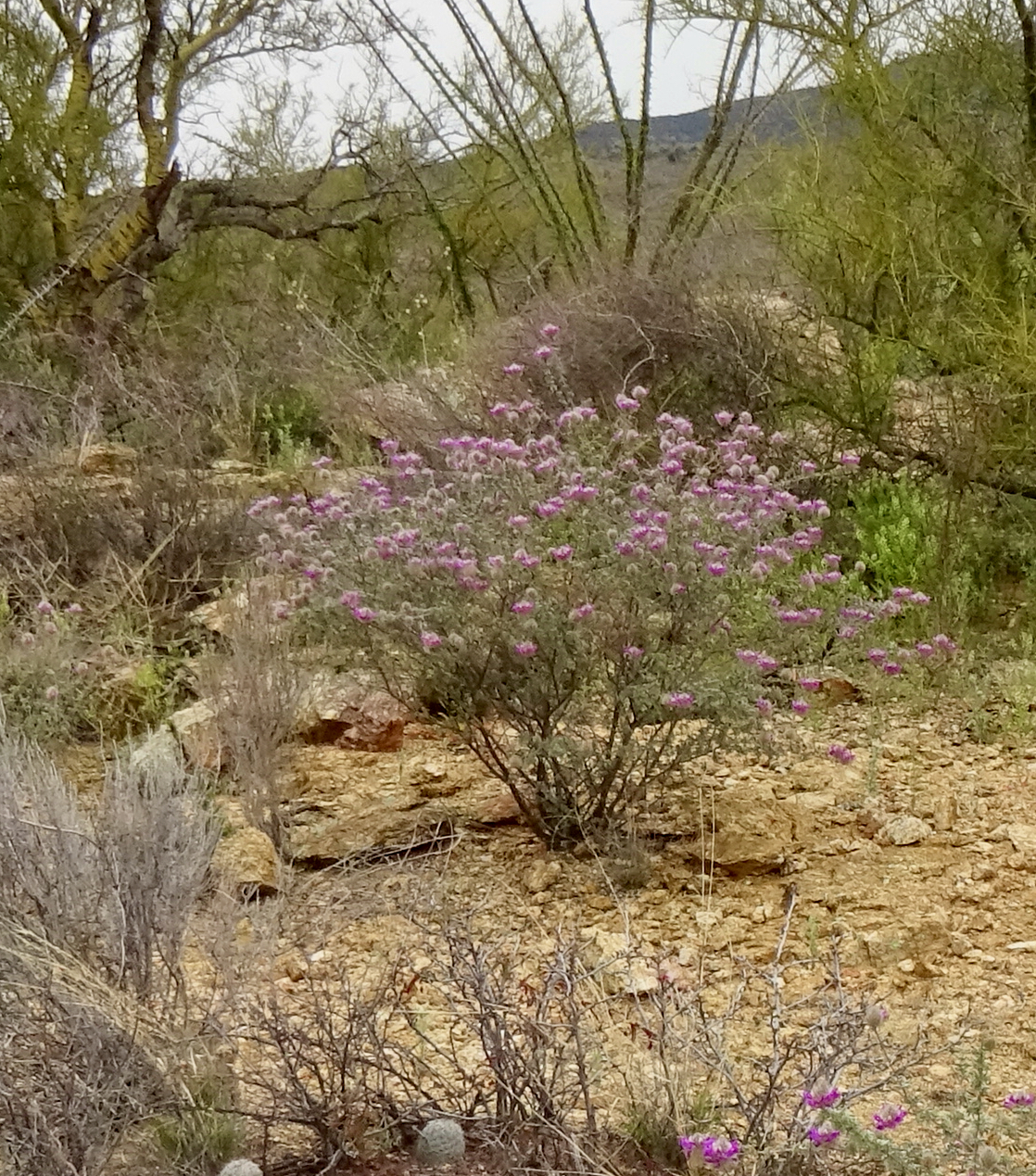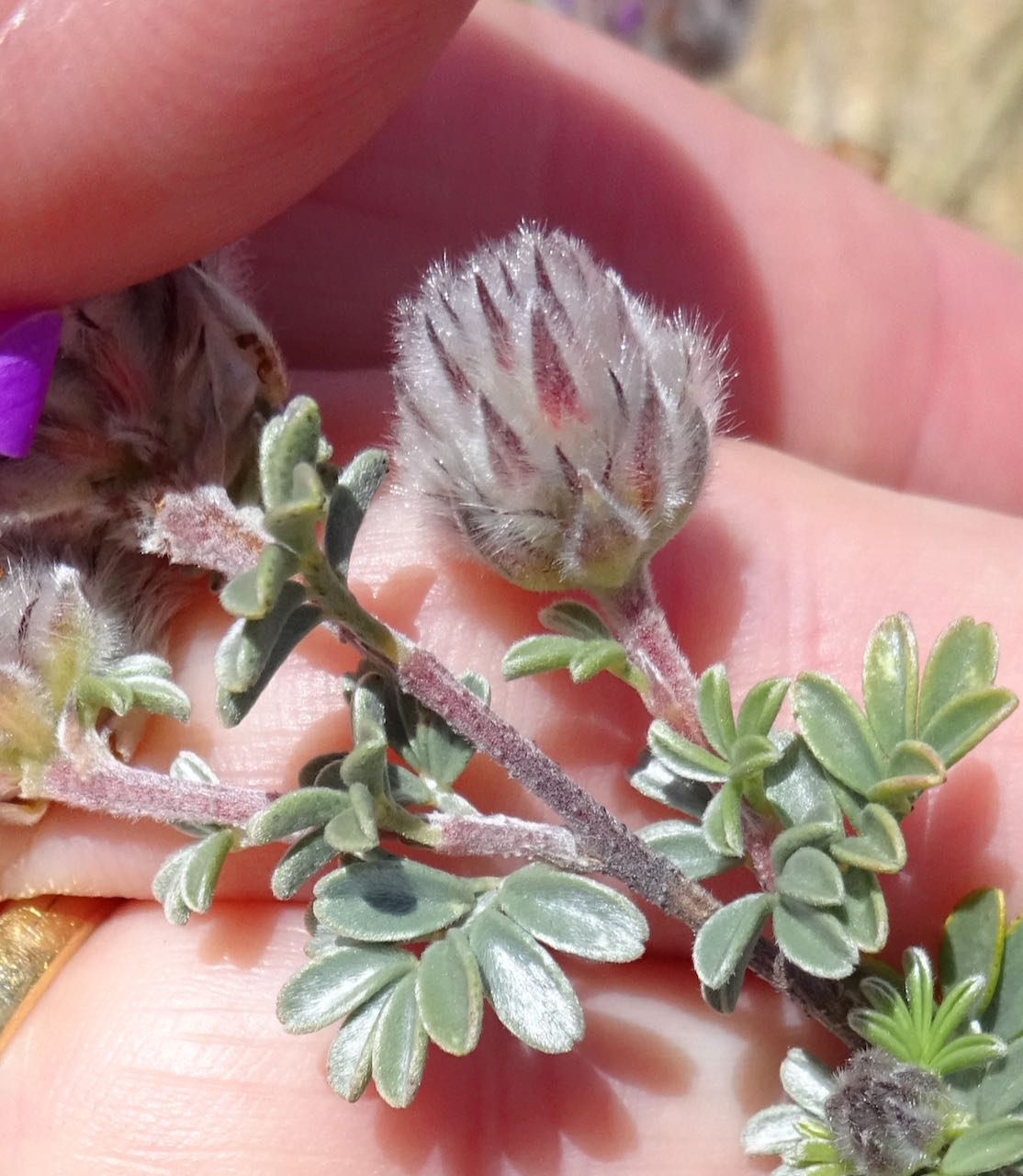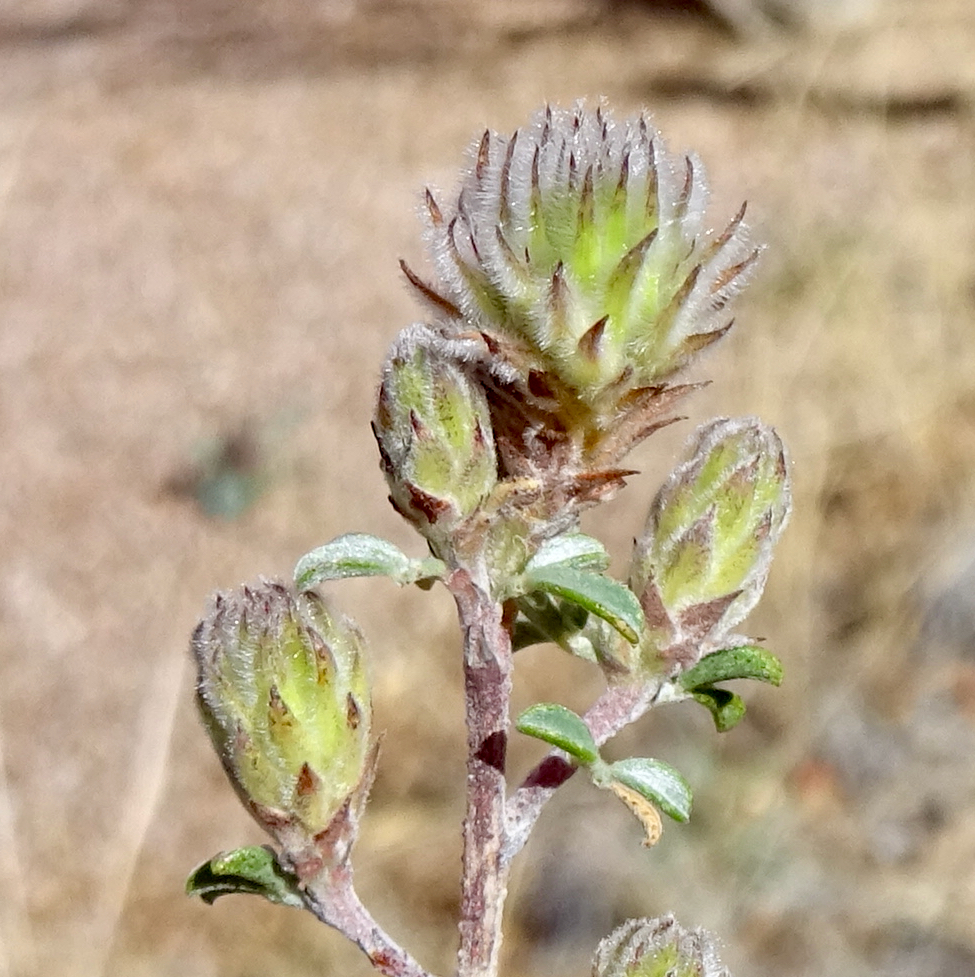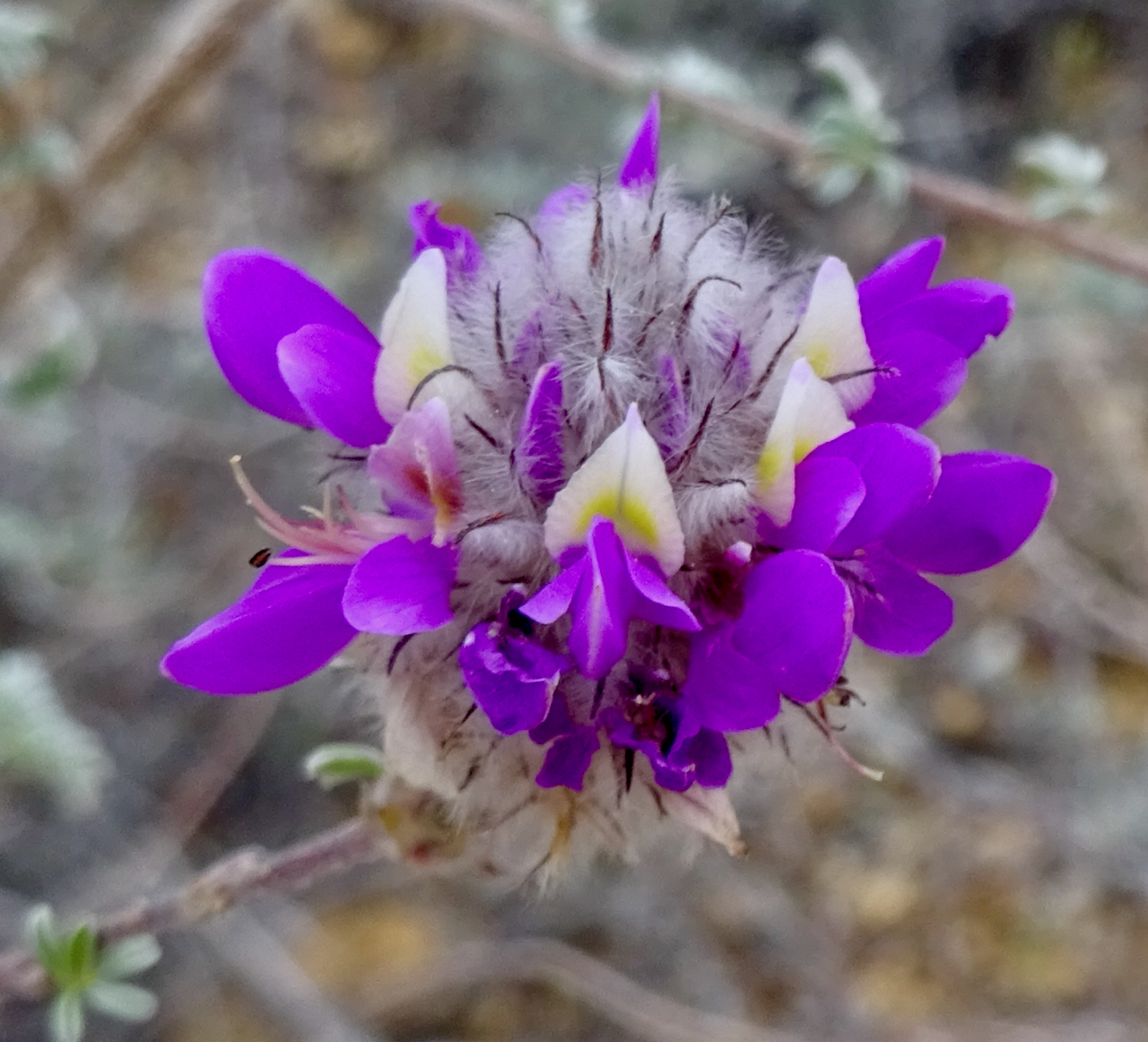Indigo Bush
Dalea pulchra
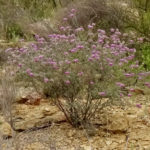
About the Plant
Indigo bush, also called bush dalea and Santa Catalina prairie clover, is a small, evergreen shrub native to southern Arizona. It is common in the foothills of both the Rincon and Santa Catalina Mountains. It blooms reliably in spring, but after wet summers it can bloom again in fall, usually October and November.
Grow indigo bush in full sun and well-drained soils. Plan for this plant to grow to 5 feet x 5 feet - give it ample room and limit pruning, as the natural shape is attractive. Indigo bush is drought tolerant but in a landscape situation it appreciates extra water every couple of weeks in summer to prevent leaf drop. Excessive irrigation will make the plant tall, floppy, and unattractive. Give indigo bush a spot it likes and it will slowly reseed nearby.
Notes
- You can distinguish this species from other shrubby daleas such as Dalea formosa (featherplume dalea) and Dalea frutescens (black dalea, a fall bloomer) by its very silvery foliage.
- Indigo bush is also called "pretty dalea", a direct translation of the scientific name: pulchra means pretty.
Wildlife value:
- attracts bees
- larval plant for the caterpillars of Reakirt's blue and Southern dogface butterflies
More Information
Horticultural information from ASU
Technical botanical description from SEINet
In books:
Native Plants for Southwestern Landscapes by Judy Mielke, page 122
Trees and Shrubs for the Southwest by Mary Irish, page 172
